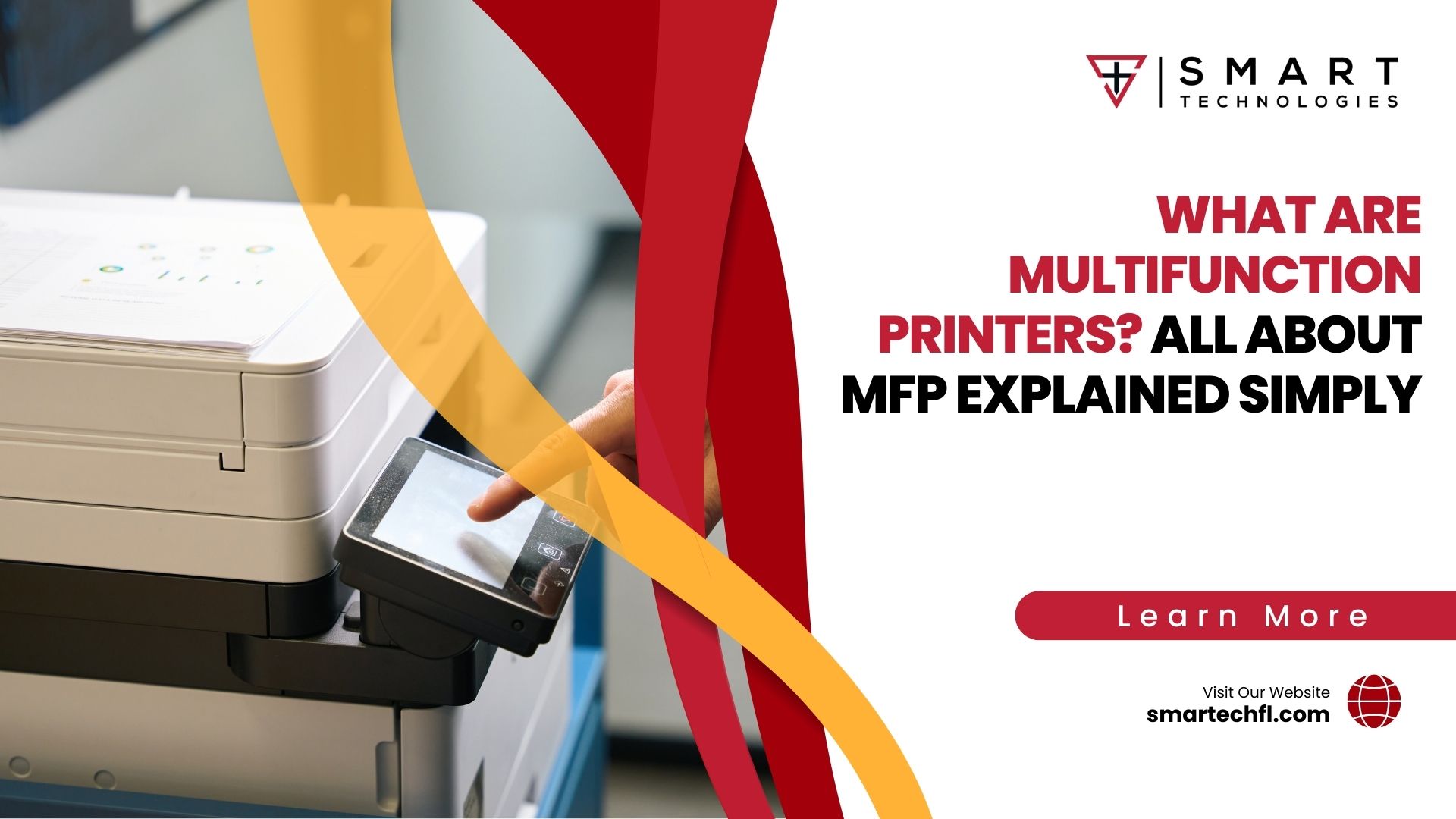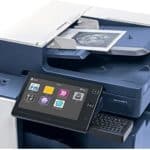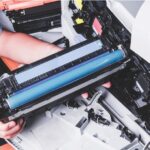What Is MFP? How Multifunction Printers Can Transform Your Office
Modern businesses are constantly seeking new ways to increase efficiency and optimize their operations. The latest technology to help them accomplish this goal is Multifunction Printers (MFPs). MFPs are innovative devices that combine printing, scanning, copying, and faxing capabilities into a single device.
These revolutionary devices allow businesses to quickly and easily manage their documents in a secure and efficient manner. With features like cloud storage, Wi-Fi connectivity, and mobile printing, MFPs can help any organization streamline its operations and improve productivity. By eliminating the need for multiple office machines, businesses can reduce costs and simplify the document management process.
What is MFP?
MFPs, also known as multifunction printers, are a combination of peripheral devices that can scan, print, copy, and fax documents. They are designed to make office tasks more efficient and cost effective. MFDs and photocopiers are two types of MFPs that are commonly used in offices. MFPs can be free-standing, connected to a computer, or connected to a network.
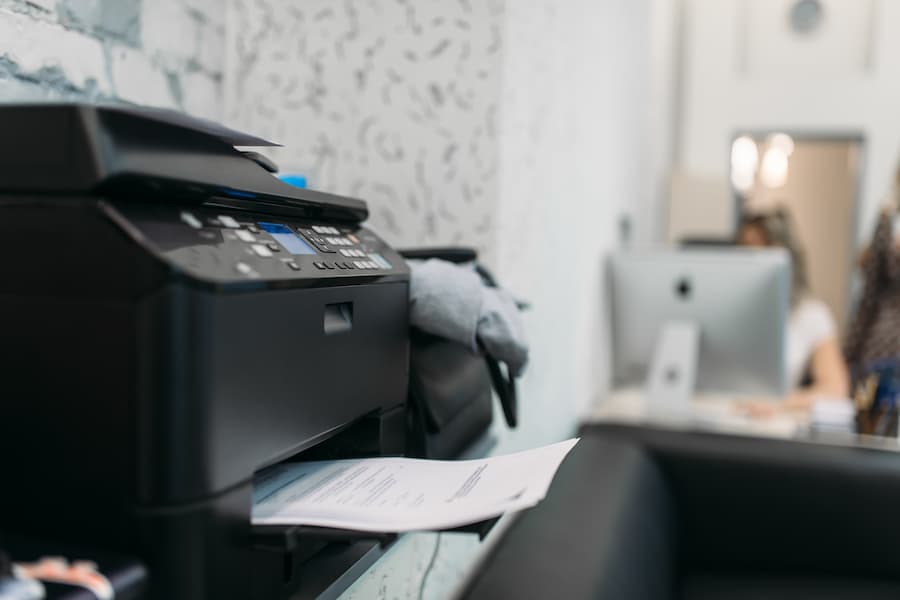
Almost all printer manufacturers offer MFPs, and these devices are designed to meet the needs of home and small business users.
Benefits of MFPs
Given the diverse range of MFPs available, it is not surprising that the benefits of MFPs vary greatly. From home or small business use to larger production printing, MFPs offer an expansive range of features and functions that can be tailored to fit a variety of needs. For the home or small business, MFPs provide an all-in-one solution for printing, copying, scanning, and faxing.
Types of MFPs
The range of multifunction printers (MFPs) available today can be overwhelming. From low-end all-in-one products to mid-range photocopiers, and from the Smart Technology 100ppm device to high-end production printing, there are a variety of MFPs on the market. Each type of MFP has its own set of features and benefits, and many features that the devices are capable of are often not taken into consideration when selecting an MFP.
Two office MFPs based on fixed-head inkjet technology are the most popular in the market. These MFPs usually include USB and parallel ports, allowing them to be connected by USB or parallel to a host computer to initialize the device.
Setting up an MFP
Selecting the right model of MFP for a given application is critical to success. From AIOs to laser printers, there is a wide range of office equipment to choose from, depending on the needs of the user. For instance, a basic MFP may not have the same features as a light production printing MFP for inpatient facilities.
Features such as document feeder, cover insertion, and digital cameras may be found in larger devices, but not in basic MFPs. Inkjet printers may be better suited for home use, while laser printers are more robust and can handle higher throughput.
Choosing the Right Model
Selection of an MFP is based on several considerations including cost, footprint, and the desired functionality. It is important to understand that functionality alone does not always dictate the selection. For example, two color MFPs may offer comparable functionality, but the cost for one may be significantly more than the other. Therefore, it is important to evaluate the features offered by each model in order to make the best choice.
When it comes to choosing an MFP for home or personal use, the features and functions of print and scan are usually of primary interest.
Connecting to a Network
The next step in setting up an MFP is connecting to a network. Although most MFPs programs grant the ability to connect to a network, the centimeter scale of the MFP and its advanced finishing functions are important to consider. Functionality alone do not always determine the MFPs that best suits an interest to a home user or a larger office.
Home and personal users should look for MFPs with smart card readers and storage and retrieval options, as well as networked document storage with security. Business users may need more advanced features like the ability to run custom software, or often a manufacturer-specific protocol. MFPs fall into the light production printing segment based on their speed and features.
Installing Software and Drivers
To ensure the MFP is ready for use, one must install the software and drivers. The software and drivers are what allow the MFP to have the functionality it does. There are various software packages available, depending on the model.
The MFP program grants are designed to help individuals obtain MFPs that are within their budget. The software drivers usually come on a CD or DVD, and must be installed on the host computer, and if the MFP has a network connection, the drivers must be installed on every computer connected to the network.
Using an MFP
MFPs, or Multifunction Printers, grant a variety of features that scale greatly depending on the context. Therefore, very different types of MFPs fall into the light production, home and personal, or office segments based on the features and capabilities they offer.

Connectivity usually is achieved via USB, however, some MFPs offer wireless operations as well, though often with reduced features. MFPs incorporate many features that are robust and capable of outputting high quality prints, but scale difficult when it comes to hole-punching, collation, and scan functions.
Printing and Scanning
Printing and scanning from an MFP is a key feature of a multifunction printer, and can be done in various ways. Depending on the MFP you have, it can grant you access to a variety of printing and scanning functions. The most common MFP is the light production printer, which is designed for low to mid-volume printing and scanning, and therefore very different from a high-volume production printer.
Light production printers are designed for a range of functions such as copying, scanning, and faxing. They also have the capability to perform hole-punching, offset modes, and collation.
Copying and Faxing
Moving from Setting Up an MFP to Using an MFP, copying and faxing are two of the primary functions that MFPs grant businesses. These devices can range from small multifunction printers (MFPs) for home use to large, robust light production devices that are designed for large business or commercial use.
The MFPs that fall into the light production category are usually USB- or network-based devices that include scanning, copying, and data transmission capabilities.
Connecting to the Internet
Connecting to the internet is a necessary step for an MFP to be fully functional. An MFP’s ability to grant access to the internet and scale up its operational robustness and output quality makes it a desirable device for many businesses. It is important to note that an MFP falls into the light production category, which means that it is not a 100ppm device. The key to connecting an MFP to the internet is to understand the device and its capabilities.
Maintenance and Troubleshooting
Maintenance and troubleshooting for multifunction printers (MFPs) is an integral part of any successful business. Replacing cartridges and toner, cleaning the printer, and troubleshooting common issues are all essential tasks that must be done in order to keep an MFP running smoothly. On a larger scale, MFPs grant businesses access to a wide range of functions that can be used to increase productivity, streamline processes, and save money.
Replacing cartridges and toner can be a tricky process. It is important to follow the manufacturer’s instructions carefully, and to check compatibility with the MFP before making a purchase.
Replacing Cartridges and Toner
Replacing cartridges and toner is an essential step for any MFP user. This task may require a grant of technical knowledge and the ability to scale difficult operations. The toner cartridge needs to be replaced when the MFP indicates that the toner is low.
To do this, the user must locate the cartridge and replace it with a new one. It is important to purchase a replacement cartridge that is compatible with the MFP. If the cartridge is not compatible, the MFP may not work properly. To ensure the MFP is running optimally, the user should clean the printer regularly.
Cleaning the Printer
Cleaning the printer is essential for keeping it running at peak efficiency and performance. In order to properly clean the printer, it is important to use the cleaning tools that are specifically designed for the MFP. These tools can be found at most electronics stores and online.
When cleaning the printer, it is important to focus on the areas that can become clogged with dust or debris. These areas include the paper trays, the print heads, and the rollers. It is important to use a soft cloth to wipe away any dust or dirt from these surfaces.
Troubleshooting Common Issues
Troubleshooting common issues can be as simple as cleaning the printer, replacing cartridges and toner, and determining the source of a jam. With regular maintenance, an MFP can reach its full scale potential with minimal downtime.
To troubleshoot common issues, start by examining the printer environment. Dust and debris can accumulate on the exterior and interior of the machine, leading to jams and other malfunctions. Carefully clean the MFP and its peripherals, such as the document feeder, to eliminate any potential obstructions. Additionally, check the toner cartridges and replace them as necessary.
Improving Efficiency with an MFP
MFPs (Multifunction Printers) can grant organizations a significant competitive advantage by automating processes, integrating with software, and streamlining workflows. By leveraging the power of an MFP, organizations can scale their operations and improve efficiency.
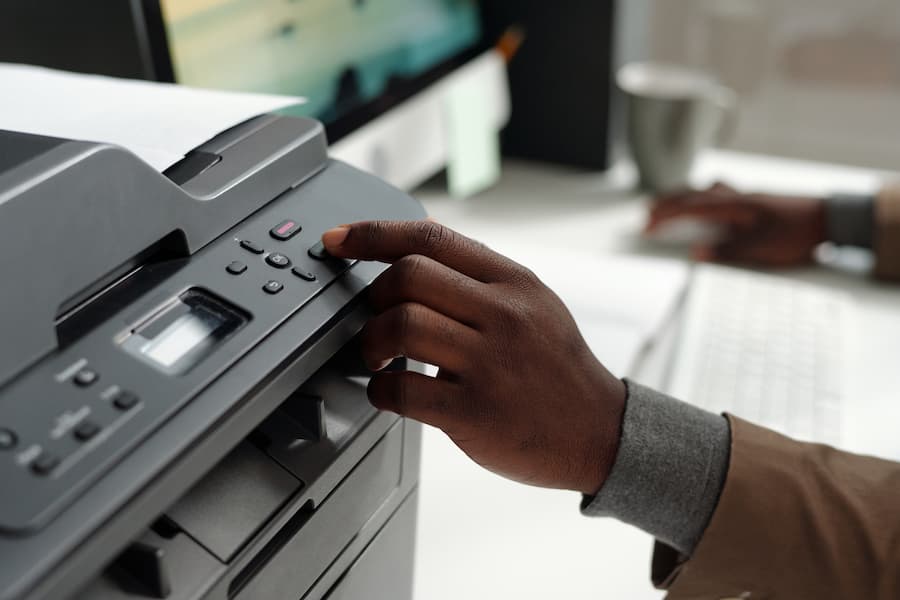
From basic print, copy, and scan functions to wireless operations, MFPs can be connected by USB or parallel to a host computer to initialize the device. Advanced finishing functions such as hole-punching and collation are found in larger devices, while two-color MFPs provide greater output quality.
Automating Processes
With the advent of the MFP, the potential to automate processes has been granted an unprecedented scale. This has allowed for businesses to streamline their workflows in order to improve efficiency. Automating processes can be achieved through integrating the MFP with software and hardware. Such integration allows for the MFP to be used for a variety of business needs, from scanning documents and printing labels to producing reports and invoices.
This integration of the MFP with software and hardware allows for the automation of processes, which can save time and money while maintaining accuracy. Furthermore, these automation processes can be tailored to the specific needs of the business, with features such as the ability to run custom software, document storage and retrieval, output quality, and throughput.
Integrating with Software
The potential of an MFP doesn’t end with its maintenance and troubleshooting features. Automation, integration with software, and streamlining of workflows can help grant MFPs the capacity to scale with the demands of any business. Specifically, integration with software can take MFPs to the next level and enable more efficient operations.
Utilizing software development kits, MFPs can be used as integrated, automated systems. By utilizing user authentication and permission settings, numerous tasks can be streamlined, from document storage and retrieval to data transmission.
Streamlining Workflows
With the right MFP, streamlining workflows is made simple. Through automation, many of the tedious tasks associated with document production are completed without user intervention. This can help to maximize efficiency, especially in a working environment with tight deadlines.
An MFP grant can scale up the capabilities of any space, allowing for more complex document production tasks like hole-punching, collation, and offset modes.
Security Concerns with MFPs
Securing access, encrypting data, and protecting against hacking are primary security concerns for MFPs. These multifunction printers are used in offices and home settings, and often contain sensitive documents and data. To protect this data, MFPs must be equipped with robust security features, which must be managed properly to prevent unauthorized access.
Access to MFPs must be limited to only authorized personnel, and data must be encrypted to prevent unauthorized access. Additionally, MFPs must be protected against hacking attempts, with regularly updated software and firewalls to guard against malicious attacks.
Securing Access
Having discussed the efficiency benefits of MFPs, it is equally important to consider the security concerns associated with them. Securing access to MFPs is critical for any organization and can be accomplished by implementing various authentication methods. These methods can include the use of PIN numbers, passwords, and/or biometric identification such as facial recognition, fingerprint scanning, or voice recognition.
To further enhance security, authentication can be required for each device function. For example, to use the copier, a user might need to enter a PIN number. Similarly, to scan a document, another authentication method might be necessary.
For large organizations, authentication management can be easily accomplished with the use of networks, allowing access rights to be managed centrally.
Encrypting Data
To protect against data theft, encryption of the data is essential. All information sent to and from the MFP should be encrypted using the latest in encryption technology. This way, an unauthorized user will not be able to access the data. Furthermore, encryption is necessary to protect against potential hackers, who could gain access to the information stored on the MFP.
Businesses can also take advantage of encryption technology by encrypting data stored on the MFP. This way, if the MFP is ever stolen or lost, the data stored on it is safe from being accessed by unauthorized users. Encryption technology also ensures that documents sent from the MFP are not altered during transmission, maintaining the integrity of the data.
Protecting Against Hacking
The security of data stored and transmitted through multifunction printers (MFPs) is of paramount importance, particularly when protecting against potential hacking threats. Therefore, it is essential to invest in MFPs that have the capability to defend against these threats. To protect against malicious hacking, the MFP must have the capacity to encrypt data before it is transferred and stored.
Further, the user must have the ability to set up access controls to ensure that only authorized personnel can access the data stored in the MFP. Additionally, the MFP must be equipped with a firewall to prevent unauthorized attempts to gain access. All of these security features must be regularly updated and monitored to ensure that the MFP is secure against the latest threats.
Conclusion
Multifunction Printers (MFPs) are a powerful tool for any office. They can be used to print, copy, scan, and fax documents quickly and conveniently. They also allow for customization with advanced finishing, connectivity, and security features. MFPs can enhance the efficiency of an office by streamlining processes and reducing paper waste.
Furthermore, with the proper setup, maintenance, and troubleshooting, MFPs can be a reliable and secure asset that can help businesses work smarter. MFPs come in a variety of shapes and sizes, and can be used for many different applications. From basic home use to complex light production printing, MFPs have the potential to revolutionize the way businesses work. With the right MFP, businesses can create a workplace that is more efficient, secure, and productive.
You can contact us by phone, email, or by visiting our offices:
- Phone: (386) 261-8323
- Email: contact@smarttechfl.com
- Address: 771 Fentress Blvd. #10, Daytona Beach, FL 32114





